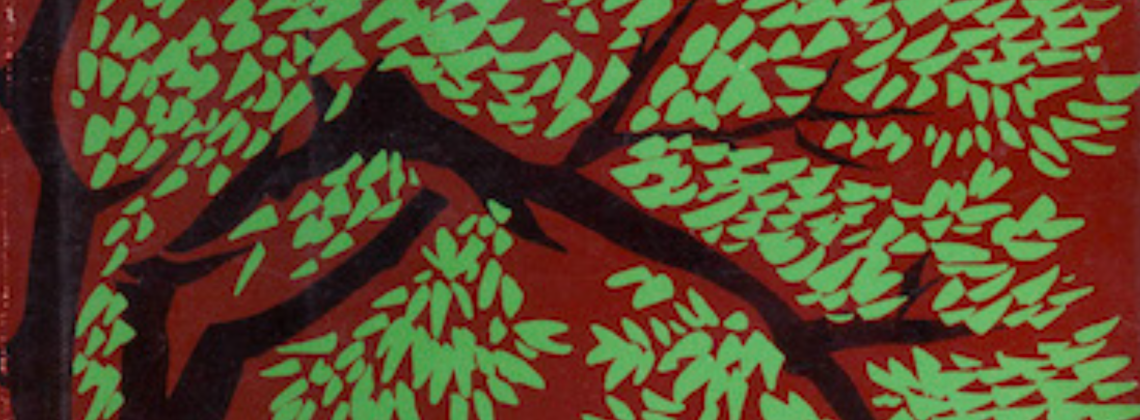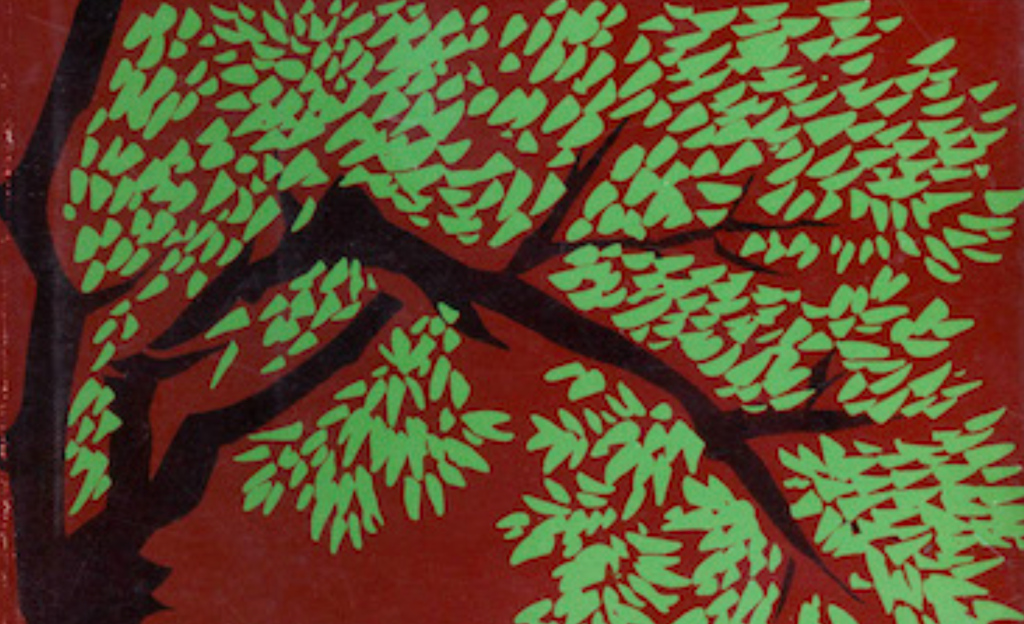

We need a theology of fiction
A Theology of Fiction by Cassandra Nelson. Wiseblood Books, 2025. 99 pp., $10.00
I have a student who tells me every time we meet about his latest “glimmers”—those small moments of joy that brighten his day. He may describe flowers blooming in the campus courtyard, the way sunlight warmed his skin as he walked to office hours, or an unexpectedly invigorating conversation he had at a bar about football and the meaning of life with strangers the previous night.
When reading Cassandra Nelson’s A Theology of Fiction, the latest addition to Wiseblood Books’s series of monographs on contemporary culture, I thought about this student for two reasons. First, like others in the series, this monograph is brief. It clocks in at just under one-hundred pages—ideal for an afternoon with tea, providing a perfect “glimmer moment” for any academic or literary aficionado who delights in the blending of theology and fiction. Second, I found myself captivated by Nelson’s prose and her gift for drawing readers into meaningful stories. Time and again, I caught myself jotting “glimmer moment!” in the margins. “Ah, this is beautiful,” I thought, marveling at her insights or poetic turns of phrase.
Nelson explains her central vision in the “Introduction,” subtitled “Whisper Down the Lane.” She likens textual criticism to the children’s game of telephone: “I find something touching in . . . the messy, fallible, and convoluted paths by which culture, tradition, and stories are preserved and passed on.” As scholars trace the history of manuscripts and commentary, they uncover not only brilliance and depth but also errors and misunderstandings. As in the game of telephone, mistakes inevitably creep in: Scribes miscopy, interpretations evolve, facts shift. Yet these imperfections do not diminish the beauty or truth found within these works. Rather, they emphasize the sacred nature of the transmission itself. Drawing on St. Paul’s words—“For now we see through a glass, darkly; but then face to face”—Nelson reminds us that the limitations of human imperfection invite us to seek the divine.
Nelson describes this process as an ongoing game of telephone—a chain of connections stretching across generations, from Flannery O’Connor to St. Augustine, from David Tracy to Nelson herself. Through these links, fiction becomes more than a product of human ingenuity; it becomes a pathway to knowing God. Near the end of the book, following a beautifully articulated paragraph describing how the Holy Spirit can be seen as guiding great literature when it seems to speak to us on individual levels in different ways, Nelson observes: “Perhaps the flickers of meaning and transcendence we find in literature are designed to guide us, patiently and at our own pace, toward an encounter with Christ, the Incarnate Word, in whom content and form are perfectly united and through whom all things were made.” (“Glimmer moment!” I wrote in the margin.) The Word—Jesus—leads us through words to Him.
Nelson’s literary theology is unmistakably Catholic, embedded in the belief that creation reflects divine mystery, and that human art can guide us closer to God. At the heart of this theology lies a sacramental and incarnational framing. All creation, including the arts, emanates from God and reflects his presence. As a form of human creativity, fiction can act as a signpost to greater truths if only we take the time to look. This insight connects to the idea of the “analogical imagination,” where symbols and imagery in literature illuminate divine mystery and help us glimpse truths that might otherwise remain hidden.
To illustrate her theory, Nelson draws on the lives of Sister Mariella Gable, O.S.B. and her student Betty Wahl—two pivotal, yet still not sufficiently studied, figures in Catholic literary history. Reading about their work inspired me to reconsider what I mean when I teach and talk about Catholic literature.
Gable, whom my spouse might call a “character” (a designation of the highest honor in our household!) was a Benedictine nun and English professor at the College of St. Benedict in Minnesota. Her academic achievements, including a doctorate under the renowned Dante scholar Lane Cooper, were perhaps only matched by her unrelenting passion for fiction that revealed divine grace—God’s unwarranted, freely given love—in the face of the realities of our fallen world. At the same time, her insistence on realism in admitting sin’s starkness sometimes put her at odds with Church authorities. As Nelson notes, like the most renowned prophets, Gable even faced exile from St. Benedict’s for a time due to her exacting and unyielding literary tastes, which included putting The Catcher in the Rye on a 1958 suggested reading list (gasp!) She persevered, holding fast to her vision of literature as a medium for grace.
Gable explained in a statement that encapsulates her scholarly lens, “The sharpest conflict in the world begins to take place the moment a soul sets out to seek God in earnest. Self immediately kicks and screams for the center of attention.” Too often, literature tied to theology becomes didactic and, quite frankly, boring. It forgoes the obvious truth that humans learn not from seeing others’ perfection, but seeing themselves in others’ struggles and triumphs. For Gable, fiction was a space where the sacred and the painful tangled: a mirror reflecting human weakness, but also the hope of the Lord.
Betty Wahl, Gable’s student, exemplified and carried out her teacher’s vision. Wahl’s unpublished novel, To See the Stars, reflects her experiences at St. Benedict’s and provides readers a peek into a Dante class with Gable. Perceiving talent in Wahl, Gable sent Wahl’s manuscript to the novelist J.F. Powers for feedback. Powers responded enthusiastically, offering detailed chapter-by-chapter commentary. (The literary collaboration soon became personal, culminating in the couple’s marriage.) While Wahl devoted much of her subsequent life to family, her writing—including pieces published in The New Yorker—demonstrates her talent and engagement with Catholic themes. Nelson admirably recovers Wahl’s legacy, then passes the torch to both future scholars and enthusiastic readers.
As I closed Nelson’s monograph, I reflected on the biblical Creation story, which begins with the words “Let there be light.” These words mark the beginning of everything, bringing form to chaos and light to darkness. Similarly, Nelson’s work suggests that fiction, though imperfect, participates in this same creative act: casting light into the shadows of our human experience. As St. Paul reminds us, “we see through a glass, darkly.” Yet through the experiences of others, offered to us in reading, we catch glimpses of light. Indeed, through these flickers of meaning—whether in fiction, or in the world it reveals—we are drawn closer to the fullness of truth. Nelson calls us to notice these glimmers, to let them guide us beyond ourselves and toward one another—and ultimately, toward God.
LuElla D’Amico is Associate Professor of English and the Women’s and Gender Studies Coordinator at the University of the Incarnate Word. She is the editor of Girls’ Series Fiction and American Popular Culture and co-editor of Reading Transatlantic Girlhood in the Long Nineteenth Century.
Image: Harper Lee, To Kill a Mockingbird; cover design by Shirley Smith, 1960
“the Holy Spirit can be seen as guiding great literature when it seems to speak to us on individual levels in different ways … the flickers of meaning and transcendence we find in literature are designed to guide us, patiently and at our own pace, toward an encounter with Christ”
Heard this from John Eldredge years ago. I’m with Karl Barth.